How Many Babies Does the Dolphin Have in Their Lifetime for a Atlantic Spotted Dolphin
If you're reading this, we accept a lot in common. Similar you, nosotros know there's something very special most dolphins. Because you share our fascination with dolphins, nosotros asked our marine biologists to round upwards some remarkable dolphin facts so you tin fully capeesh why dolphins are such an amazing species. In one case you read these, y'all'll have everything you need to know about dolphins, and just a bit more. Here are some of the little known dolphin facts y'all'll learn: Dolphins may swim through the water as gracefully equally any fish, but they are not fish. Dolphins are mammals. This puts them in the ranks of other famous marine mammals such equally whales, seals, and manatees. So why are dolphins mammals? They: Warm-blooded ways that their body is able to regulate its own temperature, so they stay warm even when the water temperatures around them are cold. Some of their native environments, such as the waters of the northern Pacific Ocean, tin can get very chilly. In these places, beingness warm-blooded is a large reward for survival. Being warm-blooded also makes dolphins and other cetaceans less decumbent to infections and other wellness atmospheric condition that affect cold-blooded species. Another central feature of marine mammals is that they have lungs, not gills. Dolphins, similar whales, need to periodically come to the surface to replenish their air supply. They have blowholes that they close while diving, and then open at the surface for air. Marine mammals have too adapted in some special ways to thrive in an aquatic surround. For instance, dolphins exchange lxxx% of the air in their lungs with each breath, while humans are simply capable of exchanging 17%. Marine mammals likewise have a greater capacity for oxygen storage in their lungs, blood, and muscles. All of this creates a more than efficient use of the oxygen in their bodies and is what allows many species to swoop for extended periods of time. Dolphins give birth to live young and do not lay eggs. They tin get meaning on boilerplate every two to four years once they're mature, although some species can have 5-7 years between births. Dolphin calves tend to stay close to their mothers for a few years before venturing off on their own. However, some calves will stay with their mothers for a lifetime. Forth with gestating their young, dolphins produce milk to nourish them. Information technology may seem tricky for calves to nurse underwater, but dolphins have adapted some special physiological traits to piece of work effectually this issue. Did you know that dolphins start life with body hair? Newborn calves take hairs on their rostrum (their beak) that fall out presently after nascency This is believed to exist an evolutionary remnant from when they lived on land. Dolphins are considered one of the world'southward virtually intelligent animals, and they have several cerebral abilities that set them apart. Many researchers consider intelligence to be a combination of perception, communication, and problem-solving. You can see dolphin intelligence in action in the style they communicate and utilize tools. Communication is a large function of how dolphins socialize and hunt. They take the ability to echolocate with a serial of clicks, assuasive them to find other dolphins or like species and casualty even in the low-lite weather condition of the ocean. They tin exercise more, likewise. Did yous know that dolphin echolocation allows them to detect surgically implanted metal in swimming humans? The human trunk is comprised of nigh 75% water, and once in the water, we provide a prime construction for echolocation. This is how dolphins are able to discern that the metal is denser than homo mankind, which is by and large water. Dolphins also have a complicated method of communicating with each other. From an outside perspective, dolphins may seem to communicate much similar humans. Withal, researchers are still investigating both how dolphins communicate and what information they are able to pass to each other. Despite defective hands, dolphins are good at using tools. For instance, ane of their more specialized tricks is to bear a sponge at the end of their beak, as well know every bit a rostrum. This acts like padding, protecting them from sharp rocks as they dig through the seafloor for food. Zoological facilities, aquariums, and other places, such as Dolphins Plus, requite people a fashion to acquire more than about these remarkable animals. The educated professionals who piece of work there can share general information, threats and conservation efforts, and the latest research findings on how these animals cognitively part, communicate, and adapt. These places are both fun for the viewing public and offer a great learning experience. One of the fascinating things virtually these marine mammals is their complex methods of communication. And so how do dolphins communicate ? At that place are 3 main ways: whistles, echolocation, and social communication. Dolphins communicate through more only clicks and whistles. They tin can also slap the water'due south surface with their tail or bodies, which is officially termed breaching. Dolphins can brand squeaks, buzzes, whistles, clicks, and a broad array of other crazy noises. . These whistles can be heard by others of the species from miles away. Their whistle repertoire tin can modify as they get older, and dolphins who bond with one another can acquire each others signature whistles and oft re-create each other's whistles. Click on the links below to listen to the whistles of Atlantic bottlenose dolphins at Dolphins Plus. Echolocation serves for both communication and for navigation. Echolocation is seeing with audio, much similar sonar on a submarine. The dolphin emits a sound and then listens for the echo as that sound bounces off of objects, these sound waves travel back to the dolphin. Dolphins are able to get much more than information out of the audio than humans. This includes the size and shape of objects or obstructions near them and even what cloth they are made of. In that location are dozens of species of dolphins and each has their own unique habitats, appearance, and behaviors. Many dolphins are grey in color, some species have various patterns of black and white, and a few are even pink. In terms of behavior, all species of dolphins are quite gregarious. In fact, many dolphin species tin can form groups of over 1,000 individuals, known every bit super pods! Dolphins come in all shapes and sizes, and each species has their ain unique features. Hither's how to recognize a few of the virtually striking and unusual dolphin species, although nosotros're warning yous right now that we're saving the nearly popular species for last! You may not expect to find a dolphin in freshwater areas, but this species thrives in the Amazon River. It's also called the boto or bufeo dolphin and its pare turns pinkish as it matures. Here'southward some other entry to the list of freshwater dolphins. Every bit you lot'd guess from the name, this species tin can be establish in the Ganges River in India. It has a unique addiction of swimming sideways, assuasive information technology to sidle up to food. This hit, highly social dolphin species is found off the declension of Argentine republic and in parts of the Indian Bounding main. It's best known for a panda-like blackness and white color blueprint. Risso's dolphins beloved deeper waters, where they seek out a diet of squid and other deepwater fish species. However, their favorite prey fights back and older members of this species may have a mottled pattern of battle scars from squid attacks. Did y'all know that killer whales are members of the dolphin family unit? These animals, also commonly called orcas, are the world's largest dolphins. How big are they? Larger individuals can abound over thirty feet long and weigh 11 tons. They typically have a bold black and white design like to Commerson'south dolphin. They employ some of the about sophisticated and unusual communications of all dolphin species. These playful dolphins have earned their name, in part, for the high jumping spins they take out of the water. These aerial acrobatic tricks make them a favorite among dolphin-watchers. They are plant throughout the world, preferring warm and shallow waters. In one case you've seen one of these members of the dolphin family, yous'll never forget them. The curt-finned pilot whale has an unusual, squared-off head and lacks the long bill of most dolphin species. Pilot whales are very social and travel in pods of up to 50 members. This shy, elusive dolphin species share a similar blackness and white colour pattern to killer whales, but they are a fraction of the size. They are rarely seen past humans every bit hourglass dolphins are one of the few dolphin species who favors the Antarctic area. Although the bottlenose is the most famous dolphin species, in that location is a skilful chance yous've seen a striped dolphin in action at an aquatic center. These attractively striped animals can live in very large groups, and they perform elaborate acrobatics when they leap into the air. We saved the bottlenose dolphin for concluding for two reasons. Information technology'due south ane of the most pop species. Flipper, the earth's most famous dolphin, was a bottlenose dolphin. The other reason is they hold a special identify in our hearts, since most the dolphins at Dolphins Plus are Atlantic bottlenose dolphins. These majestic animals are night grey and, equally you lot'd wait from the proper noun, take a brusk and edgeless rostrum. Bottlenose dolphins alive throughout the world in warmer waters. They have a number of interesting features ranging from how they wait to how they interact with each other. Bottlenose dolphins are varying shades of grey with a lighter belly (counter-shading), which helps conceal them from predators. They have a streamlined body that allows them to swim up to 20 mph. The typical length for an adult bottlenose dolphin tin range between 6 to over 12 feet and they can counterbalance over a ane,000 pounds. The bottlenose dolphin'southward diet varies depending on the region where they live. These skillful predators primarily eat fish, but can also hunt other marine life such every bit squid. Dolphins take some sophisticated ways to take hold of a meal. Some of their tactics include herding casualty into muddy areas and even catching leaping fish out of the air. They tend to hunt in a group, which makes the foraging process very effective. Dolphins thrive in both tropical and libation, more temperate waters. Humans have encountered dolphin pods both near shore and in deep offshore waters like the Indian Ocean. Some dolphin groups stay in i surface area for a lifetime while others migrate. JIM SCHULTZ/CHICAGO ZOOLOGICAL Social club When their calves are born they typically weigh around xxx-twoscore pounds, compared to full-grown dolphins that can weigh over a 1,000 pounds. That's quite a difference! Bottlenose dolphins first out quite dark in colour, lightening every bit they mature. Dolphins are under threat worldwide, mainly man generated threats. Two of the biggest problems are entanglement in angling gear and nets, and pollution. Dolphins oftentimes pursue the same fish species that commercial fishing ships are hunting and may get accidentally defenseless in their nets. They can also get tangled in discarded ropes and gear, causing a significant corporeality of marine mammal deaths each twelvemonth. Finally, the human-created pollution that is affecting the world's oceans is causing a wide variety of bug for dolphins, ranging from diseases to difficulty finding food. Dolphins do not mate for life. Dolphin reproduction often involves putting on displays including posturing and vocalizations to attract a mate. Dolphins gestate for 12 months and calves are typically born tail first, and they are primarily cared for past the mothers and other related and unrelated females. Dolphin habitats tin can be are found around the world, from tropical to temperate regions. Although they are warm-blooded, they tend to avoid oceans most the Arctic and Antarctic. The bottlenose dolphin, one of the most well-known species, prefers water betwixt l and ninety degrees Fahrenheit. Nonetheless, each species has its own preferences. Dolphin habitats can be found everywhere from open oceans to coastlines to river basins. Some species are migratory and adapt well to changes in their environs. They tin can move to areas in their temperature range that offering sufficient numbers of fish. Other species are closely tied to one identify and come up under threat when humans begin developing the expanse. This is home to several species including bottlenose, spinner, and Pacific white-sided dolphins. Dolphins who live in the deep sea are better adapted to tolerating cold water than their shore-loving counterparts. Here you'll find the preferred home of bottlenose, humpback, and spotted dolphins. These species accept been found from Nova Scotia to Patagonia and everywhere in between. The Indian Ocean is the native environment for big numbers of bottlenose, spinner, and common dolphins. Off the coast of East Africa, yous'll also find the highly endangered humpback dolphin. Globe Wild fauna Organization Dolphins are best known for living in the ocean, only there are too endangered freshwater varieties. Did you know that there are dolphins in the Amazon River? The Amazon River dolphin is comparatively small, weighing up to 350 pounds, and adults are bright pink. Despite living throughout the world, dolphins are currently facing a lot of threats. Climate alter, pollution including trash and debris, and aggressive angling operations are impacting all species of dolphins. This is why marine mammal facilities are important for protecting and researching these animals. They are able to educate the public about these remarkable mammals, promote environmental stewardship, and give scientists an opportunity to understand the species more in depth. Are dolphins endangered ? Aye, there are dozens of species of dolphin that are endangered and now extinct. Some of the nearly threatened species are the ones that come into contact with humans near oftentimes. This includes the Yangtze River dolphin, the Maui dolphin, the Ganges River dolphin, and the brusque-beaked mutual dolphin. Each of these species confront meaning challenges for their future. The Yangtze River dolphin is not officially considered extinct, simply there have been no confirmed sightings for nearly 20 years. What may have happened? This species could have been a victim of human development including: The Maui dolphin, found off the coast of New Zealand, is a highly endangered species with (an estimated) less than 100 members left. The species decline is due to many issues, i of which is that they are very slow breeders. Most dolphins reproduce an average of every couple of years, simply for this species, it's 6-seven years. They also face threats to their habitats and food sources. The Ganges River dolphin is seen in Republic of india, Nepal, and Bangladesh. Because it lives in some of the almost populated areas of the globe, this species is striking hard by human being impact. Some major threats include river pollution, lowered levels of river h2o, and dam building. The short-beaked common dolphin is constitute in the Mediterranean in failing numbers. These colorful animals are endangered past fishing accidents and the increasing pollution and trash building up in the Mediterranean Sea. How tin you help? Even small changes y'all make tin can have a big touch on the hereafter of dolphins in the world. These include: Nearly of the time, dolphins are not dangerous. Some are friendly and curious while others are skittish and avoid man contact. However, don't forget that dolphins are wild fauna and tin be unpredictable. Are you interested in swimming with dolphins ? Don't do this in the wild; appreciate them from a distance. However, if you want this experience, you tin can become to a marine facility and have a safe run across at that place. Some practice's and don'ts of watching dolphins in the wild include: Do not feed wild dolphins. It teaches them to be dependent on humans, can lure them into dangerous areas along the shore, and encourages bad habits. SARASOTA DOLPHIN Research PROGRAM This last betoken is very important. Line-fishing lines, fish hooks, and discarded netting are one of the bigger threats to dolphins. Even if the creature manages to free itself, the resulting wounds attract predators and leave them vulnerable to infection. Dolphins and humans take had a long history together, from aboriginal times when fishermen and sailors watched pods of dolphins spring out of the h2o alongside their ships. Nowadays these beautiful animals are facing many challenges and threats to their habitats. These include: Humanity still has a lot to larn from and most these marine mammals. Exactly how intelligent are they? How did they evolve? What's the future for these species? These are important questions that will have more than study to answer. That'due south why responsible enquiry and interaction is so important. If yous want to support dolphins, outset at habitation past going greenish and reducing waste. Meanwhile, if you want to accept a dolphin encounter, do a footling research first to make sure y'all're working with an ethical company. Swimming with the dolphins tin can exist a wonderful, fifty-fifty life-changing feel, just should never be done in the wild. Instead, work with a company that can coordinate this and looks out for both your and the dolphin'due south well-being.
Let'due south dive in! Are Dolphins Fish?
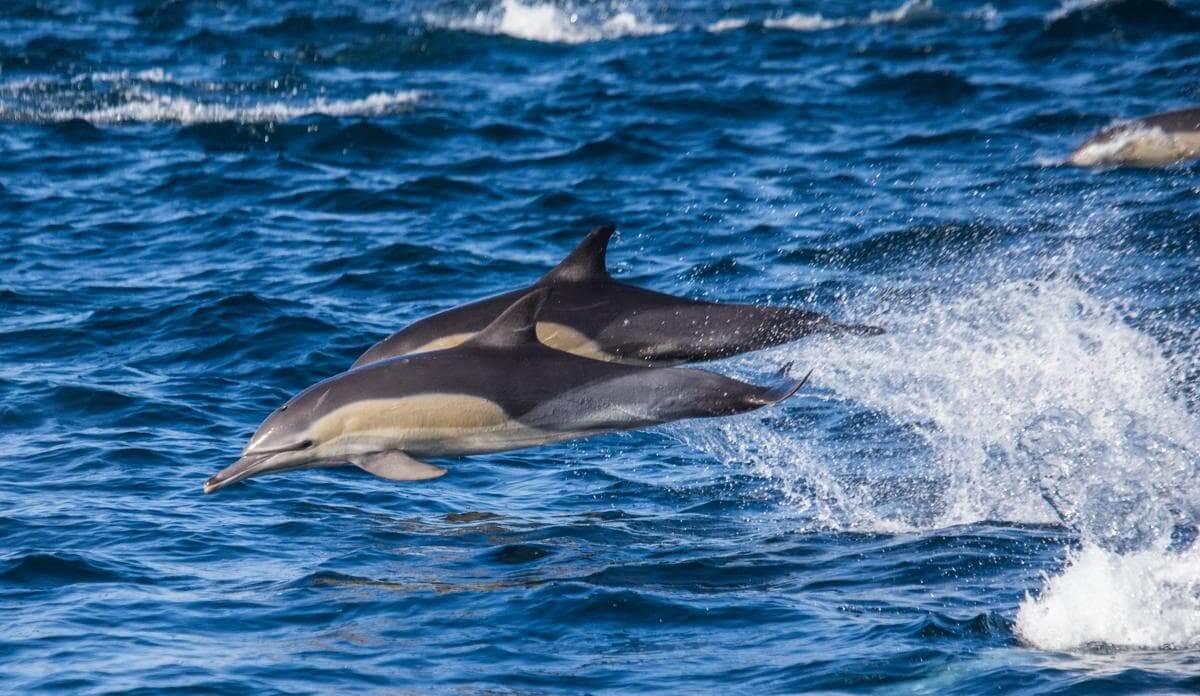
Warm Blooded
Lungs, Not Gills
Live Nascency
Nursing
Body Pilus
Are Dolphins Intelligent?

How practice Dolphins Communicate?





Listen to Julie Listen to Leo Heed to Nica Listen to Samanta Listen to Zoe 
How Many Dolphin Species Are There?
The Amazon River Dolphin
The Ganges River Dolphin
Commerson's Dolphin
Risso'due south Dolphin
Killer Whales
Spinner Dolphins
The Brusk-Finned Pilot Whale
The Hourglass Dolphin
The Striped Dolphin
The Bottlenose Dolphin

Anatomy and Advent
Behavior and Diet
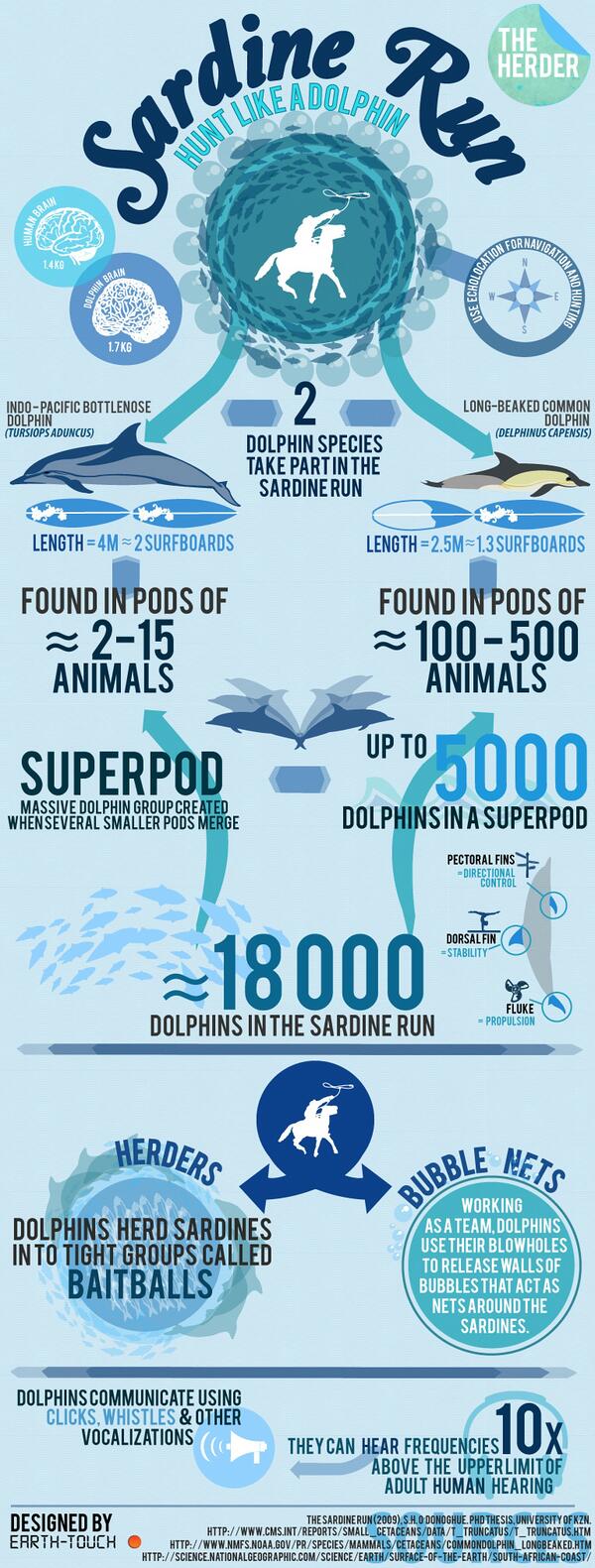
Habitat
Dolphin Calves
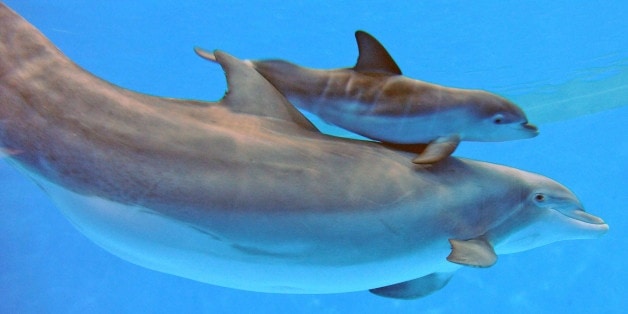
Threats and Challenges
Mating Habits
Where Practise Dolphins Alive?
The Pacific Sea
The Atlantic Ocean
The Indian Ocean
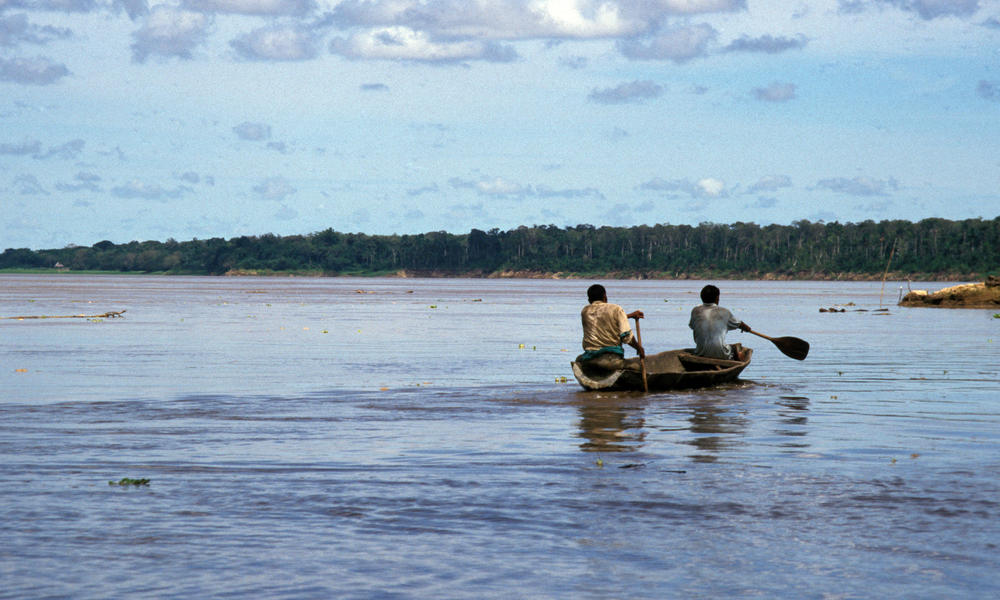
Rivers and Seas
Threats
Are Dolphins Endangered?

Should You Swim with Dolphins in the Wild?
.jpg?width=1200&name=Ann-Weaver-photo-Tt256-line-in-mouth-e13218247676921%20(1).jpg)

Tin Dolphins and Humans Coexist?
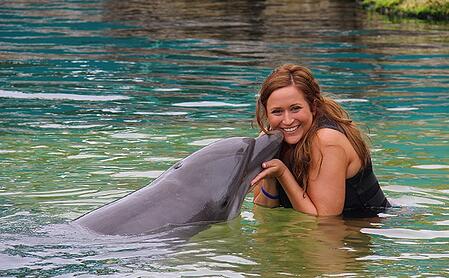
Source: https://content.dolphinsplus.com/dolphin-facts-everything-you-need-to-know
0 Response to "How Many Babies Does the Dolphin Have in Their Lifetime for a Atlantic Spotted Dolphin"
Post a Comment